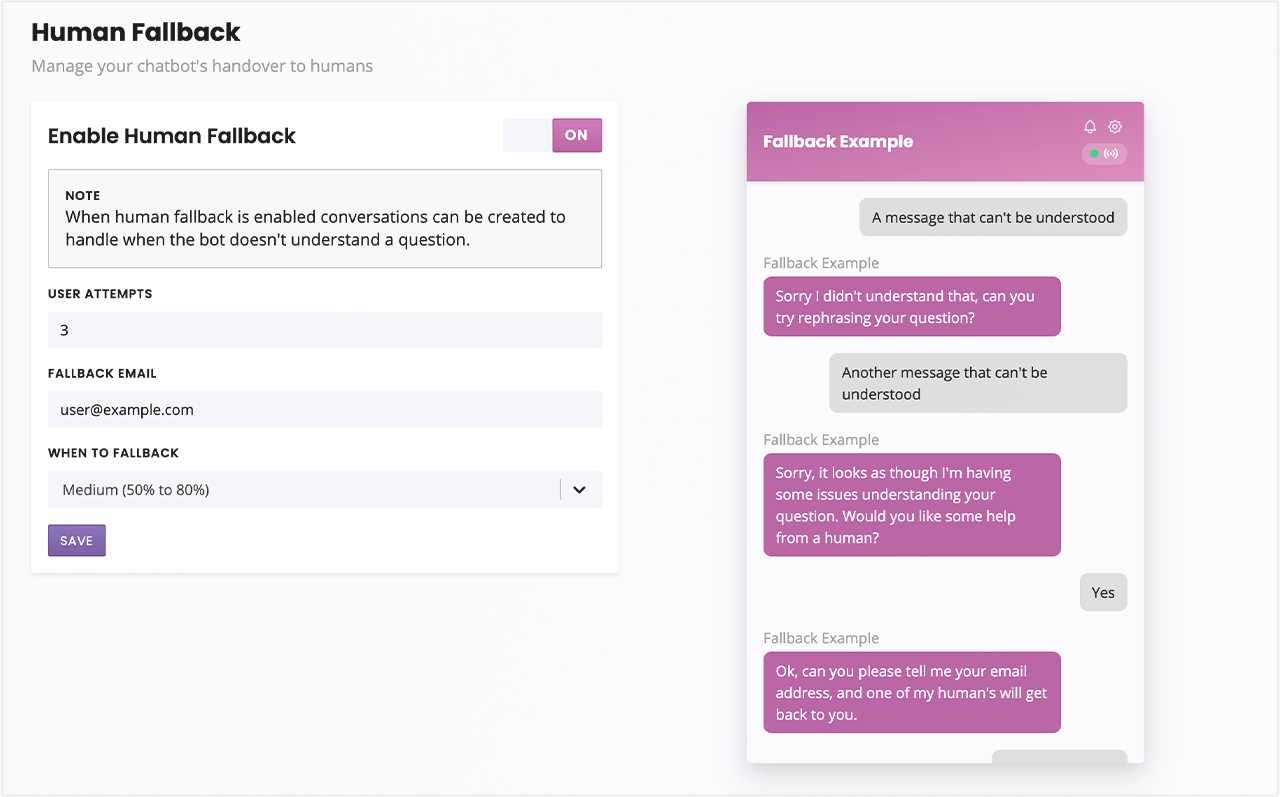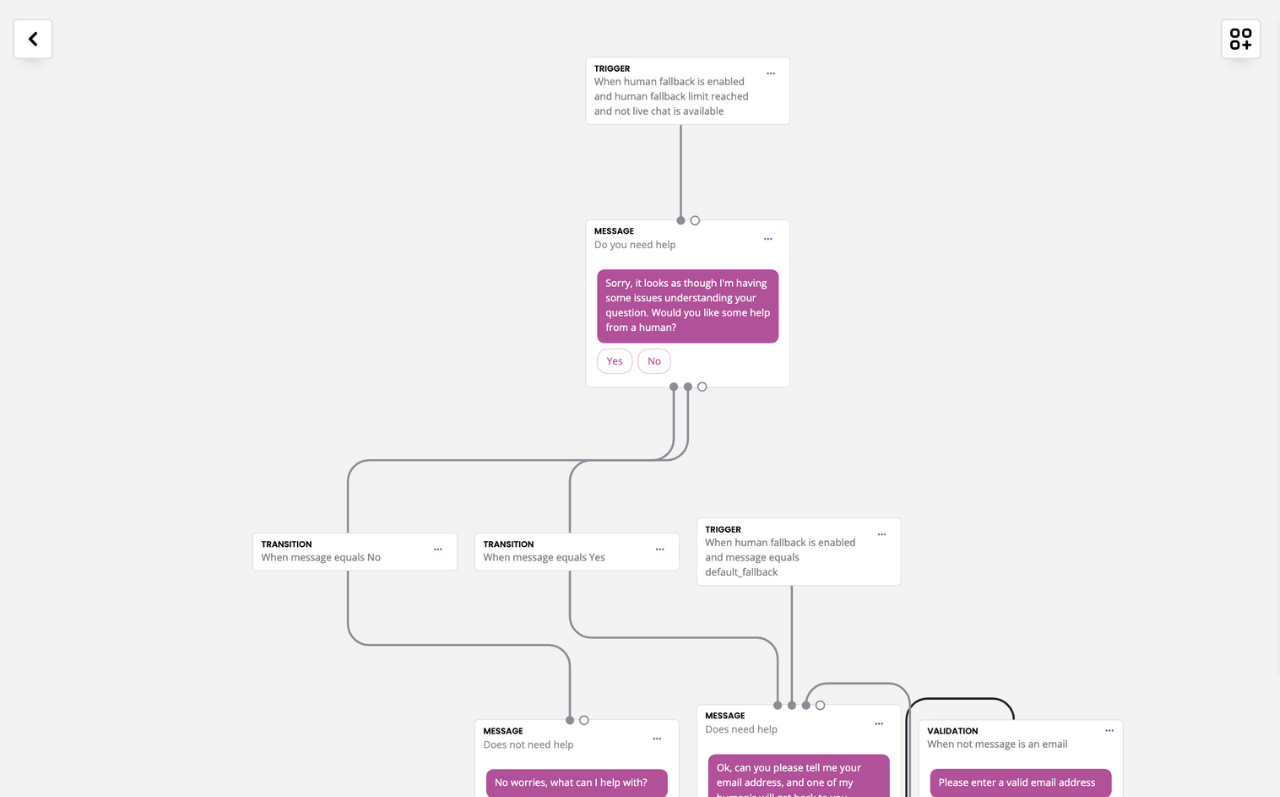Configure your human fallback process
Last updated: 02 May 2023
Sometimes, chatbots don’t understand their fellow humans – no matter how hard they try.
In this situation, the human fallback process is a safety net. After a few (configurable) attempts, the chatbot will admit it is struggling and offer to gather a few details before passing them on to its human counterpart.
The human fallback is a safety net.
You want to make sure it is in place to keep your users happy.
Step 1: Enable human fallback
To enable the human fallback process, head over to Settings → Fallback.
Toggle the activation switch to ON.
Step 2: Configure human fallback preferences
Once the toggled is ON, new options appear.
User attempts - When your chatbot doesn’t understand a user’s message, it can ask the user to rephrase. This number represents the number of times your chatbot will ask to rephrase before it uses its fallback. Usually, this number is set to 3.
Fallback email - Write the email address that will receive the human fallback request.
When to fallback - By default, your chatbot will only respond to a question if it is over 50% confident in its response. Any question that falls below that threshold will trigger the human fallback process.

Step 3: Edit your human fallback conversation text
Your chatbot comes with a default human fallback conversation.
This conversation captures the user’s email address and a short message, before sending the information to an email address of your choice.
You have full control over this conversation.
To edit it, go to Builder.
In the list of conversations, find Human Fallback Conversation and click View.
